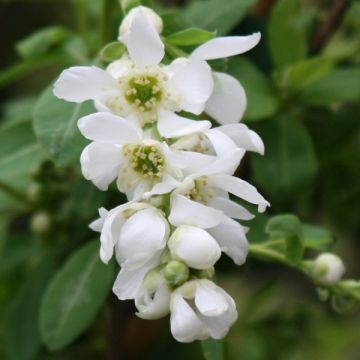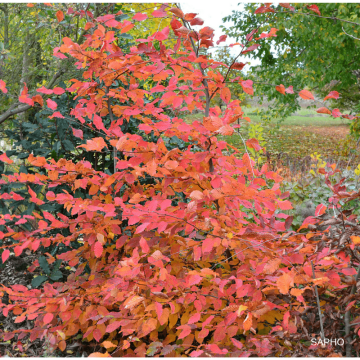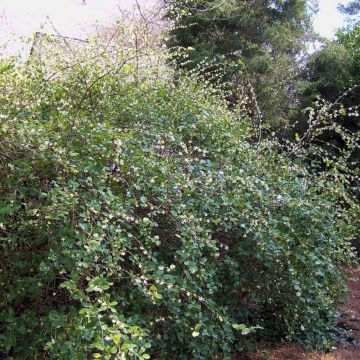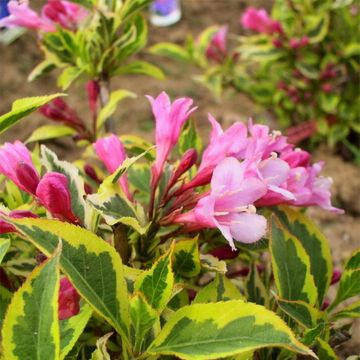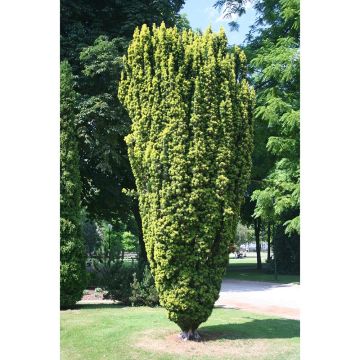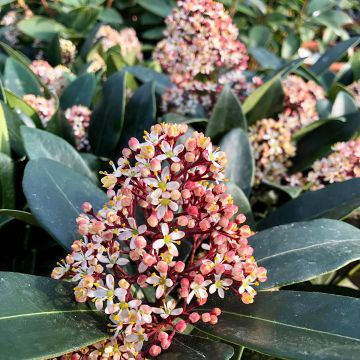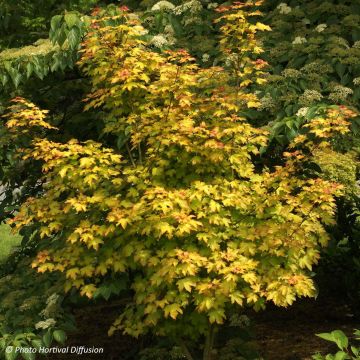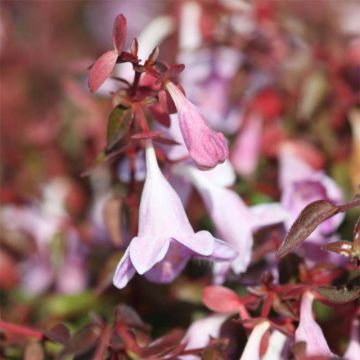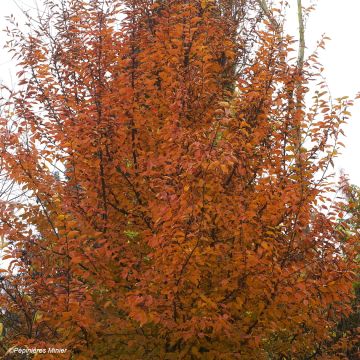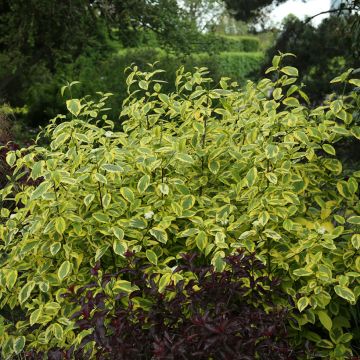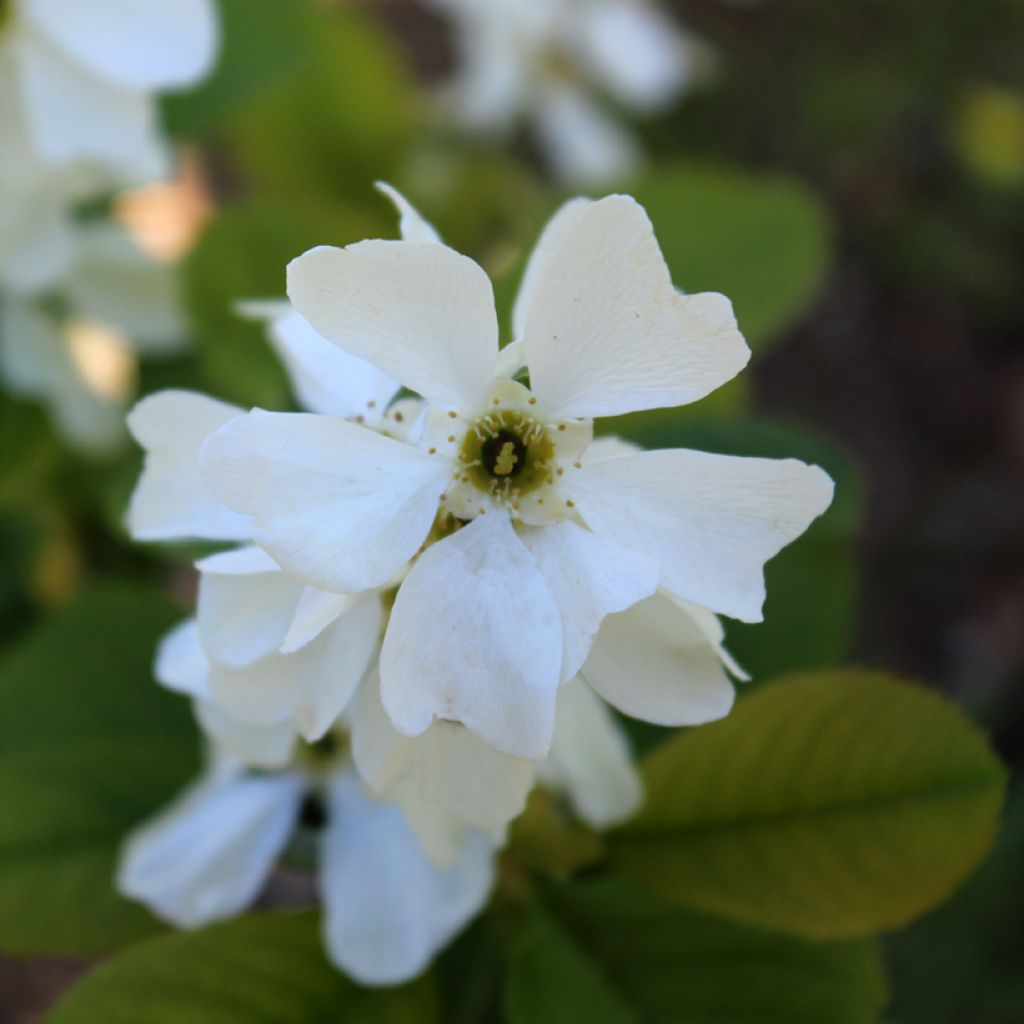

Exochorda racemosa Magical Springtime
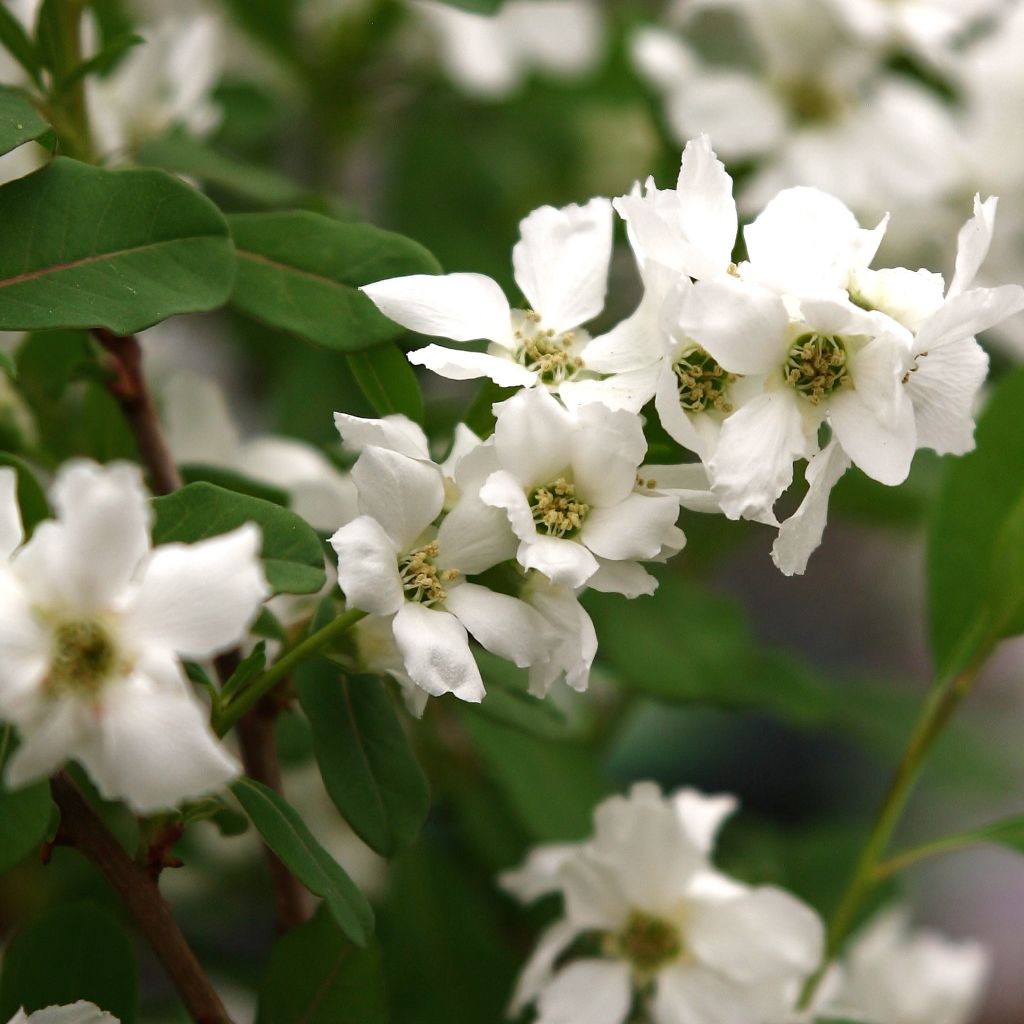

Exochorda racemosa Magical Springtime
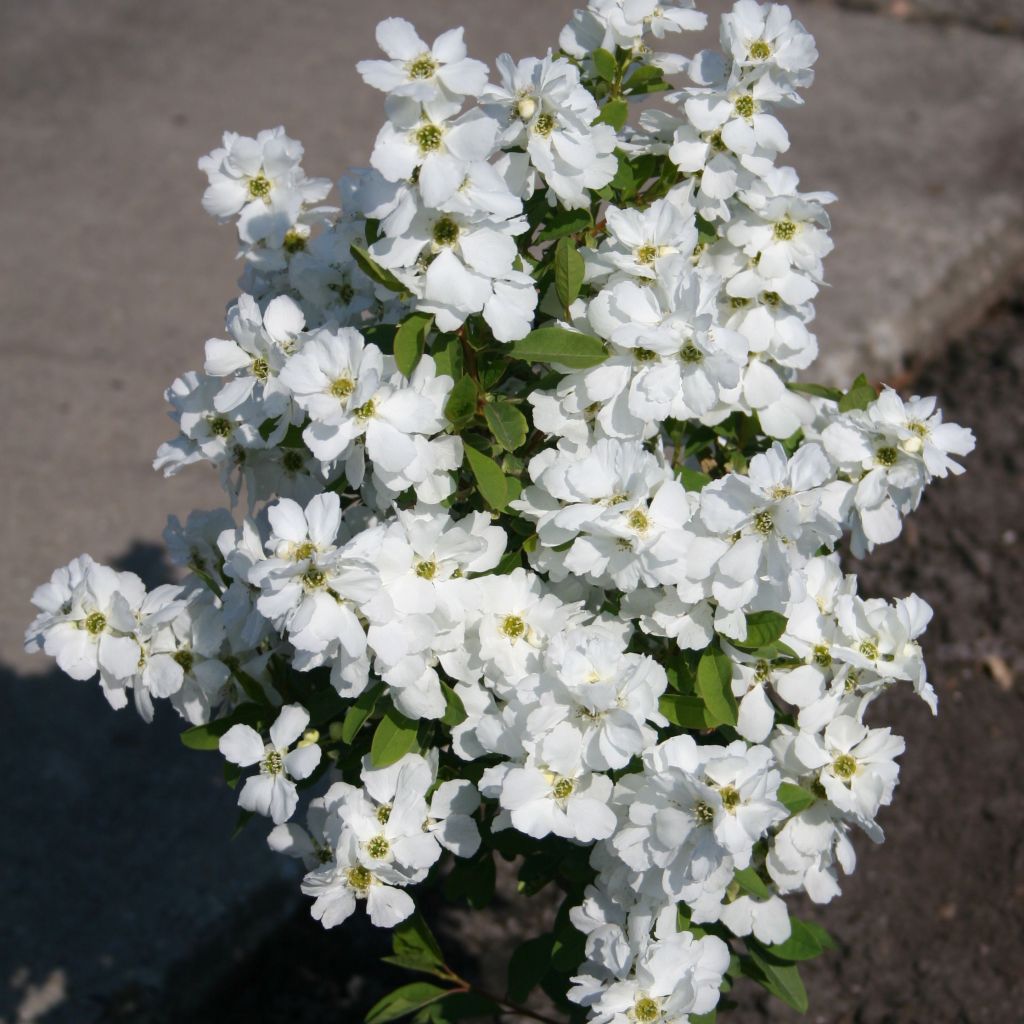

Exochorda racemosa Magical Springtime
Exochorda racemosa Magical Springtime
Exochorda racemosa Magical Springtime ® ('Kolmaspri')
Pearlbush, Common Pearlbush
This item cannot be shipped to the selected country
Delivery charge from €5.90
More information
Schedule delivery date,
and select date in basket
This plant carries a 24 months recovery warranty
More information
We guarantee the quality of our plants for a full growing cycle, and will replace at our expense any plant that fails to recover under normal climatic and planting conditions.
From €5.90 for pickup delivery and €6.90 for home delivery
Express home delivery from €8.90.

Does this plant fit my garden?
Set up your Plantfit profile →
Description
Exochorda Magical Springtime® ('Kolmaspri') is a fantastic new variety. It forms a large bush with a curiously upright habit that doesn't need pruning to flower. In spring, its branches are covered with white, round pearl-like buds that open into pure white flowers. This deciduous bush requires no maintenance and maintains an impeccable appearance. Stunning in a flowering hedge, as a standalone plant, or in a large container on a terrace. Its stems can also be cut and the buds will open in the house from the end of winter.
Exochorda Magical Springtime® 'Kolmaspri' is a deciduous bush from the Rosaceae family, recently introduced to the market. It is derived, among others, from the Exochorda racemosa species, native to Manchuria and Korea. The species is easy to grow, very hardy, and modest, but sometimes a little disappointing when not pruned to encourage generous flowering in spring. This flaw is corrected in Magical Springtime® as it blooms on both one-year-old branches and new shoots. This cultivar is also distinguished by its upright, slightly spreading habit, rather than the drooping habit of the species. It will reach approximately 1.2 m (3.9 ft) in height with a spread of 80 cm (31.5 in), sometimes a little more depending on growing conditions. This superb bush grows with beautiful reddish branches, bearing elongated and lanceolate, tender green foliage. In May and June, it produces a multitude of white flowers measuring 3.5 cm to 4 cm (1.4 in to 1.6 in) along its branches.
This bush, commonly known as the pearlbush, is well-suited for use in a free-standing hedge, as a standalone plant, or in flower beds. It can also be used in a pot (at least 50 cm (19.7 in) in diameter). It can be paired with flowering currants, Japanese quinces, Chinese almond trees, or rhododendrons. In a different combination, it also pairs well with buddleias or hibiscus, which will take over its flowering in the middle of summer. As a standalone plant, its base can be adorned with perennials and bulbs that flower at the same time, such as ipheions or chionodoxas. It can also be placed in front of a dark foliage hedge, such as conifers, boxwoods, Eleagnus ebbingei, or yew, which will enhance its snowy flowering.
Report an error about the product description
Exochorda racemosa Magical Springtime in pictures
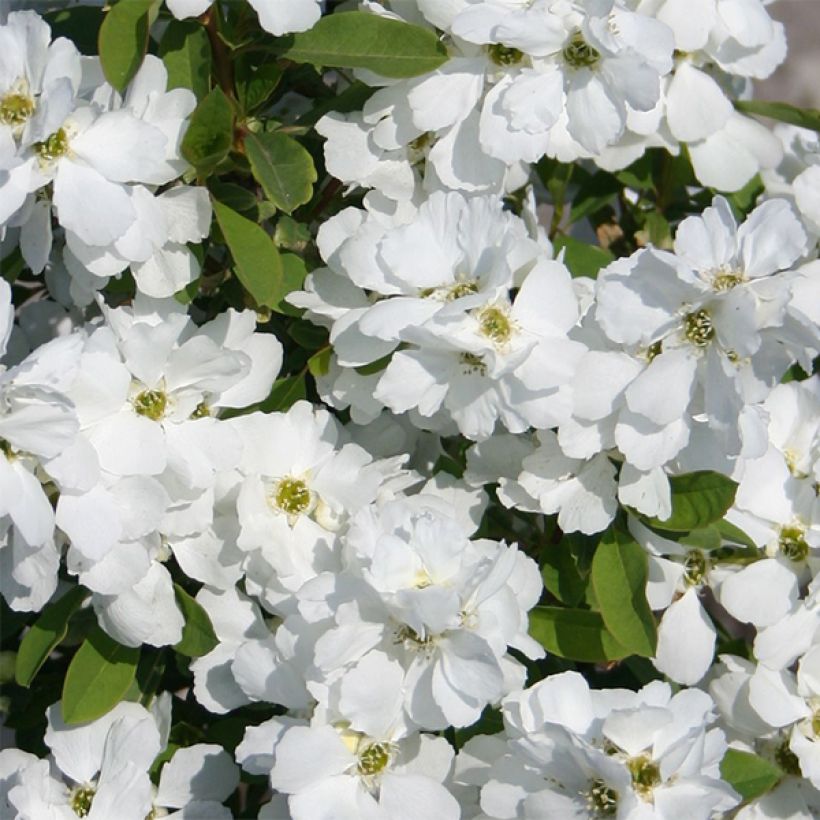

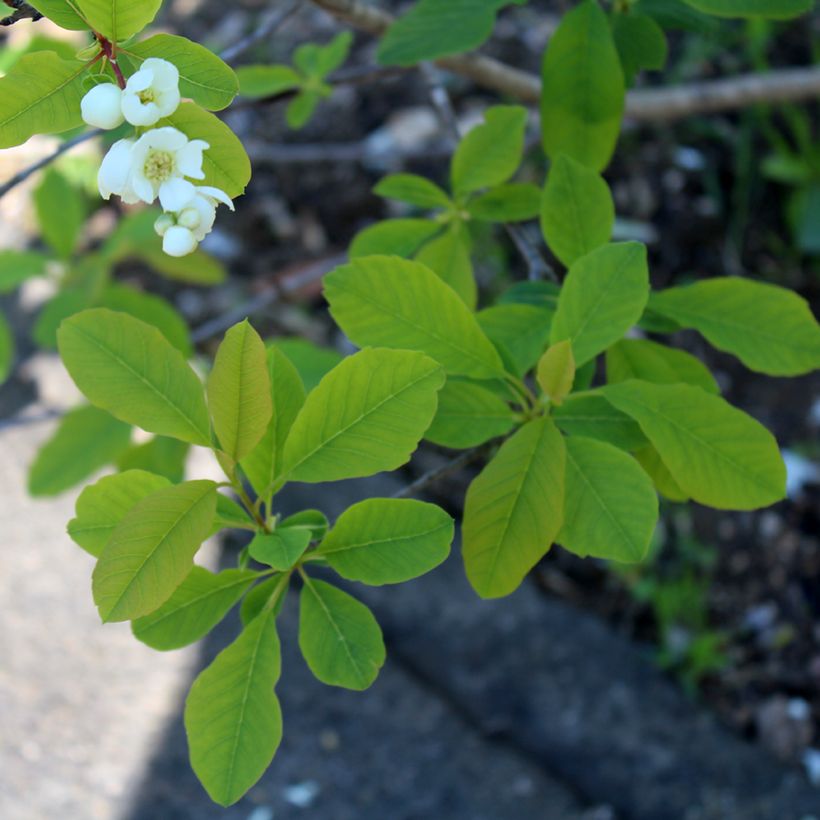

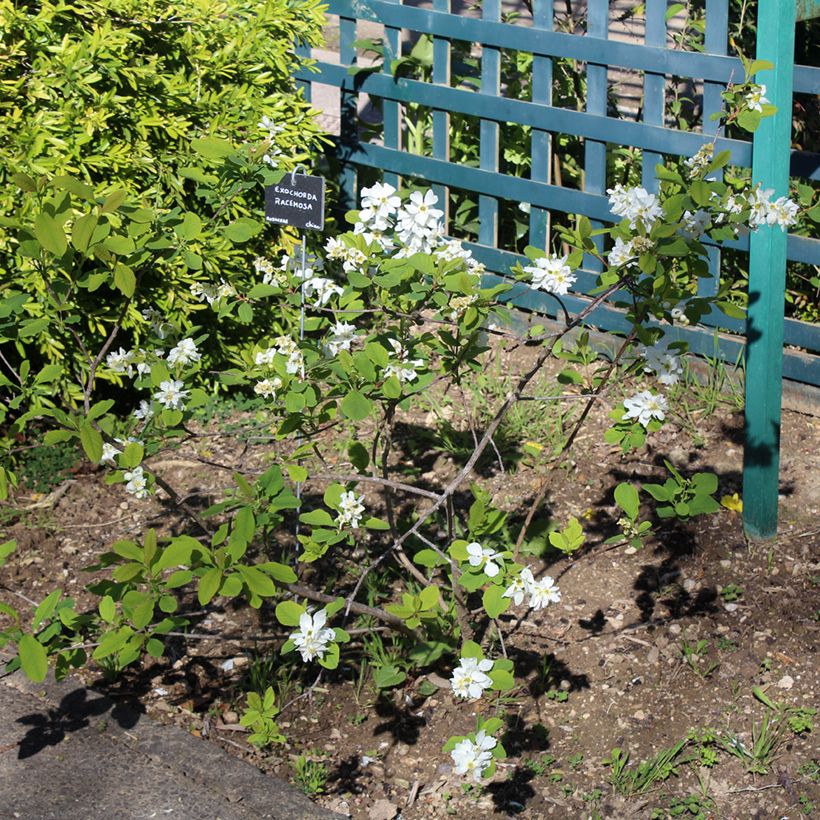

Plant habit
Flowering
Foliage
Botanical data
Exochorda
racemosa
Magical Springtime ® ('Kolmaspri')
Rosaceae
Pearlbush, Common Pearlbush
Cultivar or hybrid
Other Exochorda
Planting and care
Plant in full sun, not scorching, or in partial shade in fertile, moist, but well-drained soil. Any good, well-worked garden soil that is not too chalky is suitable. Plant it deep in the ground during autumn for flowering in May and June. Light pruning after flowering is recommended to remove faded branches and to even out the growth.
Pruning is kept to a minimum. However, you can cut back the oldest branches (over 3 years old) by a third, every two to three years, after flowering. This will promote the formation of new shoots, prevent the bush from becoming bare at the base, and ensure good air circulation in the centre of the bush.
Planting period
Intended location
Care
-
, onOrder confirmed
Reply from on Promesse de fleurs
Hedge shrubs
Haven't found what you were looking for?
Hardiness is the lowest winter temperature a plant can endure without suffering serious damage or even dying. However, hardiness is affected by location (a sheltered area, such as a patio), protection (winter cover) and soil type (hardiness is improved by well-drained soil).

Photo Sharing Terms & Conditions
In order to encourage gardeners to interact and share their experiences, Promesse de fleurs offers various media enabling content to be uploaded onto its Site - in particular via the ‘Photo sharing’ module.
The User agrees to refrain from:
- Posting any content that is illegal, prejudicial, insulting, racist, inciteful to hatred, revisionist, contrary to public decency, that infringes on privacy or on the privacy rights of third parties, in particular the publicity rights of persons and goods, intellectual property rights, or the right to privacy.
- Submitting content on behalf of a third party;
- Impersonate the identity of a third party and/or publish any personal information about a third party;
In general, the User undertakes to refrain from any unethical behaviour.
All Content (in particular text, comments, files, images, photos, videos, creative works, etc.), which may be subject to property or intellectual property rights, image or other private rights, shall remain the property of the User, subject to the limited rights granted by the terms of the licence granted by Promesse de fleurs as stated below. Users are at liberty to publish or not to publish such Content on the Site, notably via the ‘Photo Sharing’ facility, and accept that this Content shall be made public and freely accessible, notably on the Internet.
Users further acknowledge, undertake to have ,and guarantee that they hold all necessary rights and permissions to publish such material on the Site, in particular with regard to the legislation in force pertaining to any privacy, property, intellectual property, image, or contractual rights, or rights of any other nature. By publishing such Content on the Site, Users acknowledge accepting full liability as publishers of the Content within the meaning of the law, and grant Promesse de fleurs, free of charge, an inclusive, worldwide licence for the said Content for the entire duration of its publication, including all reproduction, representation, up/downloading, displaying, performing, transmission, and storage rights.
Users also grant permission for their name to be linked to the Content and accept that this link may not always be made available.
By engaging in posting material, Users consent to their Content becoming automatically accessible on the Internet, in particular on other sites and/or blogs and/or web pages of the Promesse de fleurs site, including in particular social pages and the Promesse de fleurs catalogue.
Users may secure the removal of entrusted content free of charge by issuing a simple request via our contact form.
The flowering period indicated on our website applies to countries and regions located in USDA zone 8 (France, the United Kingdom, Ireland, the Netherlands, etc.)
It will vary according to where you live:
- In zones 9 to 10 (Italy, Spain, Greece, etc.), flowering will occur about 2 to 4 weeks earlier.
- In zones 6 to 7 (Germany, Poland, Slovenia, and lower mountainous regions), flowering will be delayed by 2 to 3 weeks.
- In zone 5 (Central Europe, Scandinavia), blooming will be delayed by 3 to 5 weeks.
In temperate climates, pruning of spring-flowering shrubs (forsythia, spireas, etc.) should be done just after flowering.
Pruning of summer-flowering shrubs (Indian Lilac, Perovskia, etc.) can be done in winter or spring.
In cold regions as well as with frost-sensitive plants, avoid pruning too early when severe frosts may still occur.
The planting period indicated on our website applies to countries and regions located in USDA zone 8 (France, United Kingdom, Ireland, Netherlands).
It will vary according to where you live:
- In Mediterranean zones (Marseille, Madrid, Milan, etc.), autumn and winter are the best planting periods.
- In continental zones (Strasbourg, Munich, Vienna, etc.), delay planting by 2 to 3 weeks in spring and bring it forward by 2 to 4 weeks in autumn.
- In mountainous regions (the Alps, Pyrenees, Carpathians, etc.), it is best to plant in late spring (May-June) or late summer (August-September).
The harvesting period indicated on our website applies to countries and regions in USDA zone 8 (France, England, Ireland, the Netherlands).
In colder areas (Scandinavia, Poland, Austria...) fruit and vegetable harvests are likely to be delayed by 3-4 weeks.
In warmer areas (Italy, Spain, Greece, etc.), harvesting will probably take place earlier, depending on weather conditions.
The sowing periods indicated on our website apply to countries and regions within USDA Zone 8 (France, UK, Ireland, Netherlands).
In colder areas (Scandinavia, Poland, Austria...), delay any outdoor sowing by 3-4 weeks, or sow under glass.
In warmer climes (Italy, Spain, Greece, etc.), bring outdoor sowing forward by a few weeks.

































